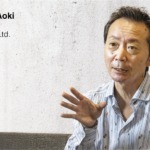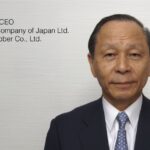GK sat down with Noriyoshi Someya, the president of Conde House. A purveyor of high-quality, artisanal furniture made in central Hokkaido, Conde House has a strong presence in showrooms across the country, as well as high-end boutiques around the world.
Regarding Hokkaido specifically, how do you believe the rich natural environment affects products made there?
Speaking of Hokkaido, the region is known as one of the five famous furniture hot spots in Japan, including Shizuoka, Hiroshima, and Fukuoka. Part of those areas have now offshored most of their production and I believe only Asahikawa in Hokkaido and Hida Takayama in Gifu are known still as domestic production sites.
Both Takayama and Asahikawa have a long history of manufacturing wooden furniture, however, Asahikawa in particular is known for its attention to detail, using locally harvested wood and achieving very distinct details in their pieces. Our company is a member of Asahikawa’s furniture-making community with 57 years of tenure.
At the time of founding, there was no longer a tradition for newlyweds to carry their own furniture to new homes, so we believed it was no longer enough to focus on cabinet making. Our founders had the experience of joining diplomats as technical trainees in Germany before establishing our company – they accumulated cutting-edge techniques and know-how in Germany and brought that back to Japan, meaning our company began as a manufacturer of chairs and tables, rather than the traditional cabinets.
Our founder was shocked by the fact that Hokkaido’s lumber was exported overseas in the 1960s and used to make world-renowned Scandinavian furniture – this was part of the catalyst in inspiring him to use local wood to produce furniture. He came back to Asahikawa and founded an interior center with 12 employees, manufacturing Western-style furniture, but with a more Japanese attention to detail.
How else is sustainability playing a role within your business operations?
We have a long history of exporting domestically harvested wood to overseas markets, meaning that we witnessed the depletion of natural resources, notably trees with broader leaves that make up the perfect materials for making furniture. According to Japanese government policy, they started reforestation with cedar and cypress trees, rather than broad-leaf trees as they are known to grow faster.
That said, Hokkaido has a much bigger ratio of broad-leaf trees compared to that of mainland Japan, at least 40% of our trees versus the mainland’s 20%. That’s why we started to reevaluate our manufacturing and harvesting of those other trees in 2014 alongside the Asahikawa Furniture Industry Cooperative. Conde House, as a member of that cooperative, tried to increase the ratio of Hokkaido broad-leaf timber used in our manufacturing, increasing our figure from 8% to 70% since 2014.
As a result, we have achieved a reduction in CO2 emissions over the last 10 years. We do not have to rely on exported timber, meaning we do not need to pay a lot for transportation requiring fossil fuels – in this way we contribute to environmental initiatives and the SDGs. The concept of ‘morizukuri’ is part of our effort to utilize oak and ash trees, which now make up the aforementioned 70% share of materials we use.
As part of your strategy for the future, what is your plan for further internationalization?
At the end of the last fiscal year, in December, we enjoyed an export ratio of 12%. We witnessed 15% two years ago, which was a record. These achievements mark a significant increase for us, since with a presence only in Germany and the US we typically expected a ratio of around 5% overseas sales. Now, with a foothold in Asia, we can enjoy double digits. We are naturally not satisfied yet, so we are working hard to improve our ratio of overseas sales. With a declining population domestically in Japan, we need to work very hard to globalize our portfolio in order to maintain sustainable business.
We cover 24 countries now in total, spanning from North America to Southeast Asia, though there are many countries and cities that our salespeople have yet to be able to leverage our assets. Vietnam, , and Malaysia stand out as countries with a growing middle class and we are very keen to expand into those countries in the future.
I have served under each of my predecessors and witnessed all the milestones along the way. I got in touch with our renaming and rebranding back in 2005 and I was involved in the marketing side quite heavily, rather than our company’s monozukuri. I hope that I will be able to consolidate our intellectual assets, including artisanal skills, exploring new markets, and so on into a single, coherent goal. Integrated design and the production of furniture covering all aspects from material development, production, design, sales, delivery, and the support of our goods’ longevity with consumers are all pillars of my strategy looking ahead.









